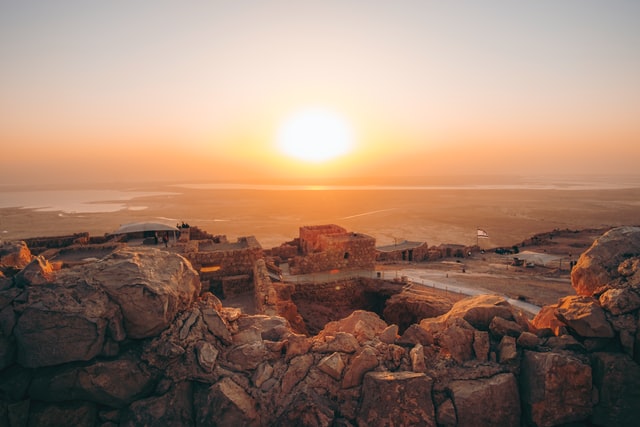
Israel is a must visit destination for all types of travelers but for history buffs specifically, the country should be at the top of your list as it’s home to numerous religious landmarks, museums, archeological discoveries and more. From the Tel Aviv Museum of Art to the ancient shipwrecks off the Caesarea coast, there is something to see around each and every corner.
Historical Landmarks
- Temple Mount: The Temple Mount is considered to be the holiest place in Jerusalem and a place of importance to those in the Islam, Christianity, and Judaism faiths. In the Islamic faith, the Temple Mount is Haram Al-Sharif (or the Noble Sanctuary,) the site where Prophet Muhammed ascended to Heaven from the Earth on a winged horse during his Night Journey. In Judaism, the Temple Mount is the site where the Great Temple of Jerusalem built by King Solomon stood. And for Christians, this is the place where Jesus as a baby was first presented to God, and where he prayed and preached to his disciples daily.
- Al Aqsa Mosque: The Al Aqsa Mosque is one of the holiest sites in the Islamic faith. The mosque stands on The Temple Mountcompound in Jerusalem. In the 11th century during the Crusaders’ times, Crusader kings converted the Al-Aqsa Mosque to a royal palace. In the 12th century, it became the headquarter of the Knights of Templar. Later in the 12th century, Sultan Saladin took it, followed by Mamluks in the mid 14th century.
Top Israel Museums
- Tel Aviv Museum of Art: The Tel Aviv Museum of Art holds some of Israel’s most comprehensive collections of modern, contemporary, and Israeli art. The museum has an impressive collection of diverse exhibitions, old masters, photography displays, a performance hall, and more.
- Dead Sea Museum: The Dead Sea Museum is located Maeen subdistrict, Jordan. It is dedicated to showcasing the history of the Dead Sea and how civilizations developed around it. One of the most popular aspects of this museum is showing the human impact on the Dead Sea as well as the benefits that the existence of this sea has brought to the civilizations of the Middle East.
- MadaTech, National Museum of Science Technology and Space: Located in Haifa, MadaTech, Israel’s National Museum of Science, Technology, and Space, is Israel’s largest science museum. Established in 1983, MadaTech is housed in the historic landmark, “Technion building”, located at the heart of a 7 acres green campus in mid-town Haifa. The campus also features the Northern Garden, where a palm tree planted by Albert Einstein in 1923 still stands. Eretz Israel Museum: Eretz Israel Museum is a multi-sensory museum focusing on the history and culture of the land of Israel. Unique for several reasons, the Eretz Israel Museum is especially unusual because its grounds encompass the archeological site of Tel Qasile, dating back to the 12th century B.C.E. The museum houses impressive, permanent collections of coins, mosaics, and Jewish folkloric objects from various periods and regions.
Archaeological Discoveries
- Second Synagogue from the Second Temple Period Found in the Migdal Excavations: A 2,000-year-old synagogue from the Second Temple period was recently discovered in Migdal which is a large Jewish settlement. Migdal served as the main base for Yosef Ben Matityahu in his war against the Romans during the Great Revolt. This is the first time in history that two synagogues have been found in a single settlement from the Second Temple period, the time when Jesus of Nazareth was active.
- Ancient treasure uncovered from 2 shipwrecks off Caesarea coast: In recent months near Caesarea, a number of fascinating artifacts were discovered from the wrecks of two ships that foundered off the coast of Caesarea in the Roman and Mamluk periods. These were discovered during an underwater survey conducted by the Marine Archaeology Unit of the Israel Antiquities Authority. The ships’ cargoes and the remains of their wrecked hulls were found scattered in shallow water at a depth of about 4 m, scattered on the sea floor.
- Prehistoric human vertebra, approximately 1.5 million years old, discovered in the Jordan Valley: A 1.5 million-year-old human vertebra was discovered in Israel’s Jordan Valley during research which was led by Dr. Alon Barash of the Azrieli Faculty of Medicine of Bar-Ilan University, Professor Ella Been of Ono Academic College, Professor Miriam Belmaker. According to his research, ancient human migration from Africa to Eurasia was not a one-time event but occurred in waves.





